SIGGRAPH 2011: Tracing Home in The Age of Networked Techniques
Chair(s):
- Mona Kasra
-
- University of Virginia
Art Papers Chair(s):
- Joanna Maria Berzowska
-
- Concordia University
Location:
Vancouver, British Columbia, Canada
Dates:
August 7th - 11th, 2011
Art Show Overview:
Introduction
In recent years, our highly mediated and networked communications environment has further connected us, overcoming physical distances and territorial boundaries. The telematically assisted interplay of physical and virtual within our lived experiences has gradually transformed our engagement with the world, made us less dependent on physical space, and enabled us to reside, simultaneously and discontinuously, in a multitude of deterritorialized, ubiquitous places at the touch of a button, echo of a voice, or nudge of a sensor. Not only has this degree of virtual interconnectivity and hyperconnectivity altered and dematerialized our sense of body, space, and time, but it has also reconfigured our relations with ourselves, with one another, and with the physical and digital environments we inhabit. As we embrace the new dynamics of the 21″ century’s connectivity and existence, we begin to wonder: where – and what – is home?
The juried selection for Tracing Home, the SIGGRAPH 20II Art Gallery, exhibits a diverse range of digital artworks that explore the concept of home in the age of networked technology. Inspired by the new life trajectories in an integrated global community where human relations and perceptions are conceived through various manifestations of a non-physical world of connections, the participating artists respond to the main theme of the exhibition and examine current cultural, emotional, structural, or metaphorical definitions of home, or construct new realities, experiences, and meanings. They creatively plug into the variety of mediated reality sub-themes and draw attention to the shift in humanity’s sense of identity, place, and belonging, and offer new interpretations for familiar concepts such as intimacy, loss, and desire.
Whether tracing home as a personal or a universal concept, the artworks selected for this exhibition utilize a combination of digital and analog technologies to mediate fresh perspectives and consolidate different discourses around home in the 21″ century. Together, they either alter time and space by eliminating physical distances and transporting viewers to faraway locations, or stir a sense of nostalgia through virtual recollections and simulated objects and interactions. In addition, they respond to various issues of our time, such as surveillance, privacy, control, disasters, immigration, spirituality, and companionship in order to comment on the social, political, and cultural attributes of the contemporary home apart from its physicality.
A significant commonality among the artworks assembled for Tracing Home is their preoccupation with the interaction between physical and virtual, actively trying to blur the line between the two – at times even attempting to occupy or operate both. They trigger viewers to question the reality of what they are confronting without fetishizing or celebrating one realm over the other. For these works, virtual and physical are only different representations of a single hybrid reality, and separation of technology from culture, or virtual from physical, is perhaps nothing but a hopeless task.
Mona Kasra, University of Texas at Dallas
Art Papers Jury
Mouna Andraos
Tad Hirsch
Craig S. Kaplan
Jason Edward Lewis
Mine Oskar
Despina Papadopoulos
Teri Rueb
Karan Singh
Tracing Home Gallery Chair
Mona Kasra
Project Manager
Elona Van Gent
Jurors
Annick Bureaud, Leonardo/OLATS
Frank Dufour, University of Texas at Dallas
Michael Hohl, University of Huddersfield
Victoria Szabo, Duke University
Online Reviewers
Lee Arnold, Drew University
Anya Belkina, Emerson College
Ryan C Buyssen, University of North Carolina at Charlotte
Maria Chatzichristodoulou, University of Hull
Gene Cooper, Four Chambers Studio
Dena DeBry, Buttonwillow Six
Annie Dissaux, Cybercentre
Richard Elaver, Appalachian State University
Christa Erickson, Stony Brook University
Sue Gollifer, University of Brighton
Arthur Hash, State University of New York at New Paltz
Linda Lauro-Lazin, Pratt Institute
John Marshall, University of Michigan
Bonnie Mitchell, Bowling Green State University
Conor Peterson, University of New Mexico
Daniel Rozin, New York University
Matthew Shlian, Initiative Artist Collective
Gemma Shusterman, AtomicBee
Victoria Szabo, Duke University
Deb Todd Wheeler, Massachusetts College of Art and Design
Anna Z. Ursyn, University of Northern Colorado
Elona Van Gent, University of Michigan
Lina Yamaguchi, Stanford University
Art Show Jury:
- Annick Bureaud
-
- Leonardo/OLATS
- Frank Dufour
-
- University of Texas at Dallas
- Michael Hohl
- Victoria Szabo
-
- Duke University
Art Show Reviewers:
- Dena DeBry
-
- Stanford University
- Lee Arnold
-
- Drew University
- Anya Belkina
-
- Duke University
- Ryan C Buyssen
-
- University of North Carolina at Charlotte
- Maria Chatzichristodoulou
-
- University of Hull
- Gene Cooper
-
- Four Chambers Studio
- Annie Dissaux
-
- Cybercentre
- Richard Elaver
-
- Appalachian State University
- Christa Erickson
-
- Stony Brook University
- Sue Gollifer
-
- University of Brighton
- ISEA International Headquarters
- Arthur Hash
-
- State University of New York at New Paltz
- Linda Lauro-Lazin
-
- Pratt Institute
- John Marshall
-
- University of Michigan
- Bonnie L Mitchell
-
- Bowling Green State University
- Conor Peterson
-
- University of New Mexico
- Daniel Rozin
-
- New York University
- Matthew Shlian
-
- Initiative Artist Collective
- Gemma Shusterman
-
- AtomicBee
- Victoria Szabo
-
- Duke University
- Deb Todd Wheeler
-
- Massachusetts College of Art and Design
- Ana Z. Ursyn
-
- University of Northern Colorado
- Elona Van Gent
-
- University of Michigan
- Lina Yamaguchi
-
- Stanford University
Art Papers Jury:
- Mouna Andraos
- Tad Hirsch
-
- University of Washington
- Craig S. Kaplan
-
- University of Waterloo
- Jason Edward Lewis
-
- Concordia University
- Mine Özkar
-
- Istanbul Technical University
- Despina Papadopoulus
-
- Studio 5050 and New York University
- Teri Rueb
-
- State University of New York, Buffalo
- Karan Singh
-
- University of Toronto
Art Papers Reviewers:
- Amber Frid-Jimenez
- Edith Ackermann
- Erik Conrad
- Frauke Behrendt
- Giana Gonzalez
- Roberto Aimi
- Kristina Andersen
- Yannck Assogba
- Pollie Barden
- Robin Bargar
- Marcus Bastos
- Lucie Belanger
- Leslie Bishko
- Marc Böhlen
- Marcelo Coelho
- Cassidy Curtis
- Zack Denfeld
- Zachary Eveland
- Lalya Gaye
Exhibition Artworks:
-

Art and Code
[Esteban Garcia] [David Whittinghill]
Categories: [Interactive & Monitor-Based] -
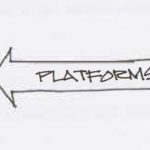
Collaboration with the Future
[Banny Banerjee] [Susan LK Gorbet]
Categories: [Installation] -
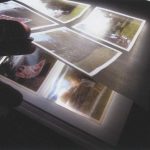
Hildapromenade 4
[Philipp Engelhardt]
Categories: [Installation] -
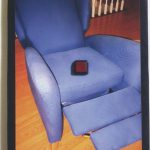
ItSpace
[Peter Michael Traub]
Categories: [2D & Wall-Hung] -

Memoirs
[Hyunwoo Bang] [Yunsil Heo]
Categories: [Installation] -
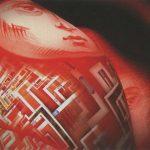
MOSTON
[Anya Belkina]
Categories: [3D & Sculpture] -
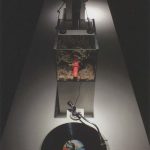
Oh!m1gas: biomieticstridulationenvironme...
[Kuai Shen Auson]
Categories: [Installation] -
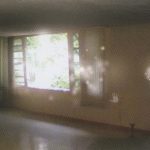
Open House
[Patrick LeMeiux] [Jack Stenner]
Categories: [Installation] -
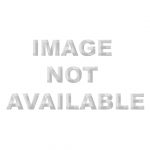
Reveries and Line Drawings
[Georgia Wall]
Categories: [Animation & Video] -

RolyPoly
[Design Incubation Centre]
Categories: [Installation] -
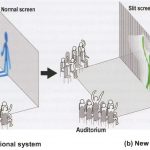
Shadow Awareness
[Shiroh Itai] [Yoshiyuki Miwa]
Categories: [Performance] -
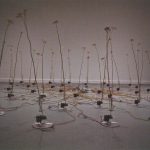
tele-present wind
[David Bowen]
Categories: [Installation] -
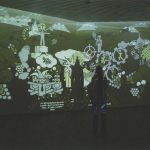
The Garden of Error and Decay
[Michael Bielicky] [Kamilia B Richter]
Categories: [Interactive & Monitor-Based] -
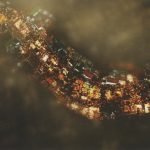
The Insatiable
[Jawshing Arthur Liou]
Categories: [Animation & Video] -
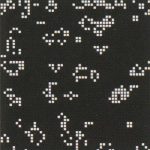
The Readers Project
[John Cayley] [Daniel Howe]
Categories: [Interactive & Monitor-Based] -
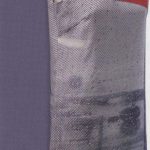
Third Skin
[Andrea Zapp]
Categories: [2D & Wall-Hung] -

Tomorrow Will Get Better
[Matthew Cox]
Categories: [2D & Wall-Hung] -
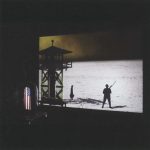
Transplant
[Heidi Kumao]
Categories: [Animation & Video] -
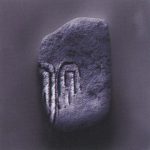
Travel Stones
[Jacquelyn A. Martino]
Categories: [Installation] -
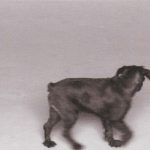
Wait
[Julie Andreyev]
Categories: [Animation & Video] [Installation]
Exhibition Writings and Presentations:
-
Title:
Art and Code: The Aesthetic Legacy of Aldo Giorgini
Author(s):
Category: Paper
Abstract Summary:
In 1975 Aldo Giorgini developed a software program in FORTRAN called FIELDS, a numerical visual laboratory devoted entirely to art production. Working extensively as both artist and scientist, Giorgini was one of the first computer artists to combine software writing with early printing technologies, leaving an aesthetic legacy in the field of the digital arts. His individual process was innovative in that it consisted of producing pen-plotted drawings embellished by the artist’s hand with painting, drawing, and screen-printing. This paper is the product of a multi-year study of Giorgini’s primary source materials provided by his estate. The authors examine the methods used by Giorgini during the 1970s that allowed him to create computer-aided art, in the hope that publishing this work will ensure that future generations of digital artists, technologists and scientists can be educated in Giorgini’s contribution to the history of the digital arts.
Title: Collaboration with the Future: An Infrastructure for Art+Technology at the San José International Airport
Author(s):
Category: Paper
Abstract Summary:
This paper summarizes the development and implementation of a three-part infrastructure for the ongoing program of technology-based public artwork at Silicon Valley’s newly expanded airport. The physical, technological, and human infrastructure provides flexibility and opportunities for future artists and future technologies while providing a robust framework for the ongoing maintenance and evolution of the program and mediating between the needs of artists and the constraints of an airport.
Title: Conserving Digital Art for Deep Time
Author(s):
Category: Paper
Abstract Summary:
Displaying digital art in the late twentieth and early twenty-first centuries is already proving to be a challenge. Exhibiting this same art in the distant future will depend upon new thinking and practices developed today by artists, conservators, and curators. Established software engineering methods for dealing with aging systems can provide a new model for the conservation of digital art, and a foundation for the enhancement of art-historical scholarship. Artists with an interest in a more refined approach to the programming that underpins their work will also be interested in software engineering concepts.
Title: Shadow Awareness: Enhancing Theater Space Through the Mutual Projection of Images on a Connective Slit Screen
Author(s):
Category: Paper
Abstract Summary:
This study discusses media technology that enables the continuous creation of performers’ physical improvisation as inspired by the reflection of imagery evoked from the audience. To realize this, the authors have focused on “shadow media,” which promote the continuous creation of imagery through “bodily awareness.” The authors have developed a system that can project shadows of the performers in various ways, which are then transformed into various shapes and colors. The shadows are connected to the performers’ feet and projected on a “passable” slit screen set up between the stage and the audience. As a result, the interactive and mutual creation of imagery by performers and audience can form an “empathetic” stage. To demonstrate its validity, the authors applied the system to a dance performance at Festival della Scienza in Genoa, Italy.
Title: The Readers Project: Procedural Agents and Literary Vectors
Author(s):
Category: Paper
Abstract Summary:
The Readers Project is an aesthetically oriented system of software entities designed to explore the culture of human reading. These entities, or “readers,” navigate texts according to specific reading strategies based upon linguistic feature analysis and real-time probability models harvested from search engines. As such, they function as autonomous text generators, writing machines that become visible within and beyond the typographic dimension of the texts on which they operate. Thus far the authors have deployed the system in a number of interactive art installations at which audience members can view the aggregate behavior of the readers on a large screen display and also subscribe, via mobile device, to individual reader outputs. As the structures on which these readers operate are culturally and aesthetically implicated, they shed critical light on a range of institutional practices – particularly those of reading and writing – and explore what it means to engage with the literary in digital media.




